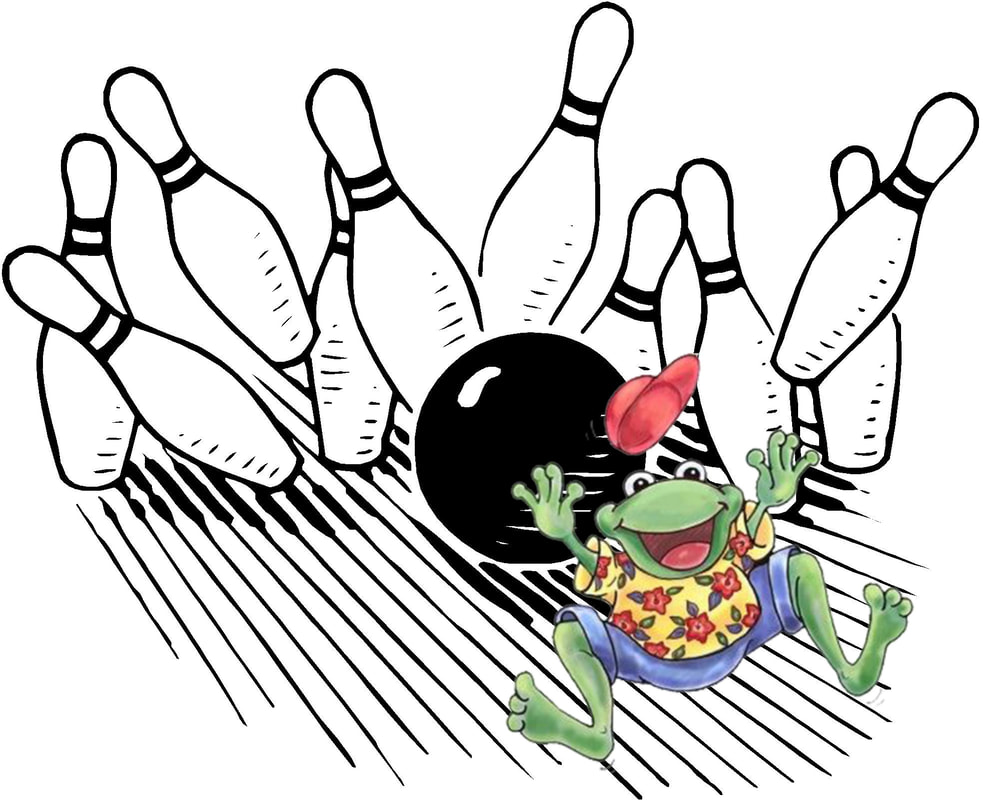On my way home last night, I was going over in my head some possible topics for this week's blogs. First day back after a long weekend is always tough and I just didn't know what to write about. So imagine my surprise, and relief, when I returned home late yesterday and discovered that today is Bowling League Day. I did a little research on the history of bowling and decided it might make for an interesting blog. The Universe conspires with us in some amazing ways.
Bowling has a long and rich history. Today it is one of the world's most popular sports. Back in the 1930s, a British anthropologist discovered a collection of objects "in a child's grave in Egypt that appeared to him to be used for a crude form of bowling. If he was correct, then bowling traces its ancestry to 3200 BC." A German historian, William Pehle, asserted that bowling began in his country about 300 AD. There is substantial evidence that a form of bowling was in vogue in England in 1366 when King Edward III allegedly outlawed it to keep his troops focused on archery practice. And it is almost certain that bowling was popular during the reign of King Henry VIII. At that time, there were a variety of "pin" games and even a few where a ball was thrown at objects that weren't pins. "One of the most eccentric games is still found in Edinburgh. The player swings a fingerless ball between his legs and heaves it at the pins. In doing so, he "flops" onto the lane on his stomach." Ouch! That's gotta hurt!
The English, Dutch, and German settlers brought their country's version of bowling with them when they immigrated to the U.S. "The first permanent American bowling location probably was for lawn bowling, in New York's Battery area. Now the heart of the financial district, New Yorkers still call the small plot Bowling Green."
The game of bowling in the U.S. has had its ups and downs. In 1841, A Connecticut law made it illegal to maintain "any ninepin lanes." It is believed that this law was put on the books to prevent gambling. Many captains of industry found a way around the law by installing private bowling lanes in their mansions.
"While it is uncertain where the tenpin game evolved, by the late 1800s it was prevalent in many states such as New York, Ohio and as far "west" as Illinois. However, details like ball weights and pin dimensions varied by region. But that changed when restauranteur Joe Thum finally pulled together representatives of the various regional bowling clubs. On September 9, 1895, at Beethoven Hall in New York City, the American Bowling Congress was born. Soon, standardization would be established, and major national competitions could be held. While women had been bowling in the latter half of the nineteenth century, the American Bowling Congress was for men. It was in 1917 that the Women's International Bowling Congress was born in St. Louis. Encouraged by proprietor Dennis Sweeney, women leaders from around the country participating in a tournament decided to form what was then called the Women's National Bowling Association."
Balls used to be primarily lignum vitae, considered to be the world's hardest wood. But in 1905, the first rubber ball, the "Evertrue" was introduced and in 1914 the Brunswick Corporation successfully promoted the Mineralite ball, touting its "mysterious rubber compound." Now organized, with agreed-upon standards, the game grew in popularity. In 1951, another technological breakthrough set the stage for massive growth. American Machine and Foundry Company (AMF, then a maker of machinery for the bakery, tobacco and apparel businesses) purchased the patents to Gottfried Schmidt's automatic pinspotter, and by late 1952, production model pinspotters were introduced. No longer did a proprietor have to rely on "pinboys.". There are still many variations of ninepins in Western Europe; likely related are the Italian bocce, the French petanque, and British lawn bowling. In the U.S. you can find a few 9-pin bowling alleys scattered here and there, often in rural communities. And they still utilize the services of pinboys.
Bowling leagues, which we're honoring today, were established soon after the most modern type of bowling was created. Ten-pin bowling is the modern form of the game that became organized in new York City back in 1895.
Today, the sport of bowling is enjoyed by 95 million people in more than 90 countries worldwide. Under the auspices of the Federation Nationale des Quilleurs (FIQ), bowling's top athletes regularly compete in Olympic Zone and worldwide competitions.
And there you have it...the history of bowling.
I hope you'll join me back here for the rest of the week when I have a bunch of interesting blogs prepared for you. I received a short email from my wise friend and teacher, The Dharma Frog, telling me that he has a special lesson for me tomorrow in honor of National Wildlife Day. I'm very excited to hear what Dharma has to say. Whatever it is, I'm sure it'll be amazing! And I'm betting that you won't want to miss that one, either.
Until then,
PEACE.

 RSS Feed
RSS Feed